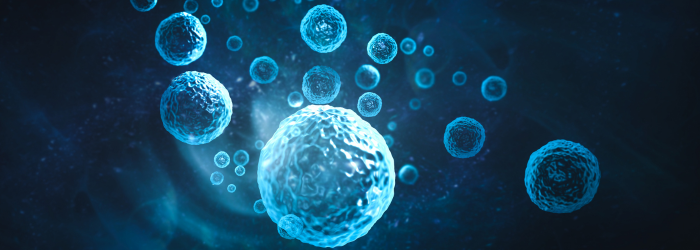
At Don Whitley Scientific, we are always excited to hear how our workstations contribute to ground breaking research. Recently, we had the pleasure of speaking with Diane Lefley, a PhD student at the University of Sheffield, about her innovative project using our Whitley H35 Hypoxystation. Diane's work focuses on a promising approach to treating breast cancer bone metastases, combining Radium-223 with DNA damage repair inhibitors.
The Project: A Dual Approach to Cancer Treatment
“My project is about treating breast cancer bone metastases with a combination of Radium-223 and DNA damage repair inhibitors. Radium-223 mimics calcium and rapidly binds to bone in vivo, irradiating close to the bone surface. If tumours are small when Radium-223 treatment is given, then the tumour will be completely irradiated. If the bone tumour is larger, not all the tumour will be effectively irradiated, meaning some cells will be able to repair their DNA damage. The DNA damage repair inhibitor should prevent this, sensitising the cells to radiation, i.e. a small dose of radiation is needed to kill the cells when the DNA damage repair inhibitor is used.
The in vitro side of my project will all take place in hypoxia, as the bone is a hypoxic environment.
My experiments are currently 7 days for MTT assays and for protein – this is so the cells can cycle (or have their cycle halted by inhibitors) multiple times for the effect to become noticeable. It takes around 72 hours for the DNA damage repair inhibitors to have a significant effect on cell cycle, but mitochondrial stress then increases, which interferes with the MTT assay, which is why I wait longer. I will also look at clonogenic assays which will take 10-14 days depending on the cell line.”
Why Hypoxia Matters
A key element of Diane’s research is the use of hypoxic conditions, replicating the bone environment where oxygen levels are low. She typically uses a 3% oxygen concentration for her experiments. This is because, “bone oxygen concentration is 1-6% and 3% lies in the middle and, the bone metaphysis where tumour cells home to is 2.5% oxygen. Large tumours would be further from the metaphysis.”
“Hypoxia is important for two reasons: 1.Hypoxia activates proteins involved in the DNA damage repair pathway that are also involved in halting cell cycle (cells proliferate less in hypoxia due to these proteins being activated), therefore DNA damage repair inhibitors could have more of an effect in hypoxia – the inhibitors would inactivate these proteins and force the cycle to cell with DNA damage, leading to higher chance of apoptosis and 2. In hypoxia, there are fewer free radicals available to cause DNA damage from radiation. In summary, the cells are less sensitive to radiation and more sensitive to DNA damage repair inhibitors in hypoxia.”

The Benefits of Using a Whitley Hypoxystation
When compared with a CO2 incubator the Hypoxystation allows the cells to remain within a hypoxic environment. “It is essential that the cells are hypoxic when the Radium-223 is added. The cabinet also keeps the radiation contained. The Perspex on the front of the unit is thicker than the shielding I was previously using, and in case of a spill everything is contained.”
“Oxygen can be cycled within the Hypoxystation, which may be useful as proteins in DNA repair are highly activated upon reoxygenation to prevent cell cycle with DNA damage and apoptosis. I am not sure if we will use it in this project, but we may use it in the future. I also like that you can track the oxygen concentration so you can see when it becomes stable and check the concentration while you have been away from the lab.”
Why choose Don Whiley Scientific?
“I met Stuart Moore, a DWS sales representative at the Nottingham BACR and told him of my project, but I was on a budget as I was doing a PhD. Stuart worked with me to ensure I would have a cabinet to facilitate my research that gave me the features I needed within budget. I personally think your customer service is better than your competitors!”
While I haven’t had any service or maintenance yet, the overall team that installed the Hypoxystation did a great job.”
We thank Diane for providing such a detailed account of her work and wish her all the best with her continued research. If you have an application that requires hypoxic conditions, please email us at sales@dwscientific.co.uk or have a look at the products below.


 au
au

 English
English